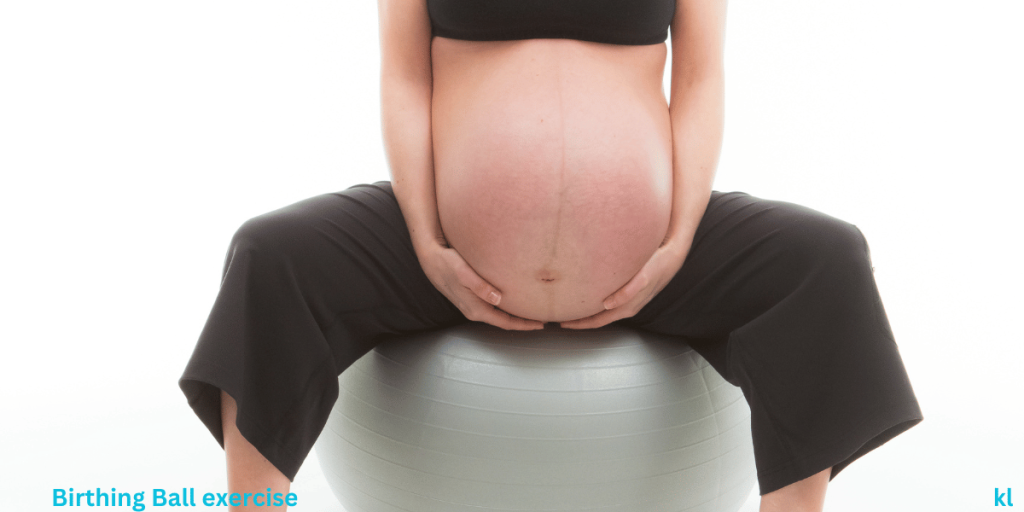Welcoming your little one into the world is a journey, but sometimes babies need a little nudge to make their debut!
If you’re nearing the end of your pregnancy and looking for safe, natural ways to encourage labor, you’re in the right place. In this guide, we’ll share 13 time-tested natural labor induction techniques, with insights from real moms who’ve tried them.
Whether it’s eating certain foods, using acupressure points, or simply walking more, these 13 Proven Natural Labor Induction Methods: Real Moms’ Guide is designed to align with your body’s natural rhythms.
Remember, every pregnancy is unique, so what works for one mom might not work for another. Always consult with your healthcare provider before trying any new method!
- What Is Natural Labor Induction?
- Walking and Staying Active: A Natural Way to Encourage Labor
- Eating Certain Foods: They Can Help Induce Labor Naturally
- Prenatal Massage Techniques: Preparing for Labor Naturally
- Acupressure and Reflexology: Natural Techniques to Encourage Labor
- Sexual Activity: A Natural Way to Induce Labor
- Nipple Stimulation: A Natural Way to Encourage Labor
- Warm Baths and Hydrotherapy: How Water Immersion Eases You Into Labor
- Prenatal Yoga and Stretching: Encouraging Labor and Easing Discomfort
- Birthing Ball Exercises: A Comfortable Way to Ease Labor
- Castor Oil: What You Should Know
- Herbal Teas and Supplements for Labor Preparation
- Visualization and Hypnobirthing: Preparing Mentally for a Calm and Empowered Labor
- Consulting a Doula or Midwife: How Professional Guidance Can Enhance Natural Labor Induction
What Is Natural Labor Induction?
Natural labor induction refers to methods used to encourage labor onset without medical interventions like Pitocin or membrane sweeping.
These methods, ranging from gentle ways to induce labor such as walking or massage, to dietary changes and relaxation techniques, aim to trigger the body’s natural labor process.
The goal isn’t to force the baby out but to support your body’s physiological readiness for delivery.
Is It Safe?
Safety is the number one priority when considering natural labor preparation to induce labor. Most techniques, like walking or prenatal yoga, are generally safe when pregnancy progresses without complications.
However, more intensive methods, such as using herbal supplements or castor oil, should be approached cautiously and with your doctor’s or midwife’s approval.
The importance of medical clearance can’t be overstated. Before trying anything, discuss your plans with your healthcare provider. They’ll assess your unique situation, including the baby’s position, amniotic fluid levels, and cervical readiness.
When to Consult Healthcare Providers
If you’re considering natural induction, timing is everything. Most experts recommend waiting until you’re at least 39 weeks unless there are specific health concerns. Some physiological markers that suggest readiness for labor include:
- Cervical softening: Your cervix begins to efface (thin) and dilate in preparation for labor.
- Lightening: When the baby drops lower into the pelvis, it’s a sign they’re preparing for birth.
- Braxton Hicks contractions: These practice contractions can indicate your body is gearing up.
Remember, every pregnancy and birth story is unique. What works for one mom might not work for another, and that’s perfectly okay.
In the end, natural labor induction is less about forcing labor and more about creating an environment where your body can do what it was designed to do, safely and at the right time.
Walking and Staying Active: A Natural Way to Encourage Labor
Walking naturally encourages your pelvis to sway, which can help your baby find the best position for delivery. Movement promotes baby positioning for labor, encouraging the baby to drop lower into the birth canal.
I vividly remember an evening stroll with my husband down our quiet street. It felt like just another peaceful moment, but little did I know that walk would be the start of something big—I went into labor that very night!
Walking also uses gravity and rhythmic movement to help position the baby’s head near the cervix, which can encourage dilation and get your body ready for labor.
Gentle walking also keeps you active, which has benefits for circulation and stamina—two things you’ll be thankful for when labor begins. Plus, the endorphins released during light exercise can help keep you calm and reduce stress as you wait for your baby’s arrival.

Tips on Walking for Labor Induction and Easing Contractions
If you’re considering walking to help start labor, timing and technique matter. Here are a few practical tips:
- Choose comfortable surroundings. Walking in a place you enjoy, like a park or around your neighborhood, can help you stay relaxed and focused.
- Maintain good posture. Keep your back straight and your shoulders relaxed to maximize the benefits of pelvic movement.
- Incorporate stairs or inclines. Walking uphill or taking a few steps can gently increase pelvic pressure, which may encourage dilation.
- Take breaks. If you feel tired or experience stronger contractions, pause and rest. Overdoing it can lead to exhaustion.
- Invite your support team. Walking with your partner, friend, or doula can make the activity more enjoyable and keep you motivated.
Remember, walking alone won’t force labor to start if your body isn’t ready, but it can be a helpful tool to nudge things along when the time is right.
Eating Certain Foods: They Can Help Induce Labor Naturally
If you’ve reached the final stretch of pregnancy, you’ve likely heard stories about certain labor-inducing foods and their supposed ability to jumpstart labor.
Spicy meals, pineapple, and dates often make the list. But do they really work, or are they just pregnancy folklore? Let’s explore.
Pineapple: Fresh pineapple contains bromelain, an enzyme thought to help soften the cervix, a crucial step in preparing for labor.
However, you’d need to eat quite a bit of fresh pineapple for a noticeable effect, as bromelain levels in one serving are relatively low. Still, it’s a delicious and nutritious snack packed with vitamin C, so it doesn’t hurt to try it!
Dates: Research suggests that eating dates in the final weeks of pregnancy might help with cervix softening methods and improve labor progression.
One study found that women who consumed six dates daily during the last four weeks of pregnancy were more likely to have spontaneous labor and less need for medical intervention. Dates are also high in natural sugars, offering a healthy energy boost for labor.
Spicy Foods: Some believe that eating spicy foods can help stimulate labor by irritating the digestive system, which might trigger uterine contractions.
While there’s no concrete scientific evidence to back this up, anecdotal reports from moms who’ve tried it are widespread. If you decide to give it a go, be mindful of heartburn—a common pregnancy woe that spicy foods can worsen.
Nutrients in Labor-Inducing Foods That Support Contractions
Certain nutrients in these foods can support your body as it prepares for labor:
- Bromelain: Found in pineapple, it may aid in cervical ripening.
- Natural Sugars: Dates provide an energy boost, which can be beneficial for the physical demands of labor.
- Capsaicin: The active component in spicy foods, it might stimulate your digestive system and indirectly trigger uterine activity.

Safe Quantities and Timing Recommendations
If you’re eager to try natural ways to start labor, keep these tips in mind for safety:
- Start small. For spicy foods or pineapple, begin with a moderate portion to avoid upsetting your stomach.
- Stick to fresh. If trying pineapple, choose fresh over canned, as processing often reduces bromelain levels.
- Time it right. Incorporate these foods into your diet during the final weeks of pregnancy, once you’re near or past full term.
- Monitor for discomfort. If you experience heartburn, digestive upset, or other discomforts, it’s okay to skip these options. Your comfort matters as much as your baby’s arrival.
Pair these snacks with light activity, like walking, to promote relaxation and well-being. Also, consult your healthcare provider to ensure these foods are safe for you.
Also as you experiment with these foods, don’t forget to prioritize your essential nutrients! Keeping up with a balanced intake of protein, healthy fats, and prenatal vitamins like folate, calcium, and iron is crucial to support your body and your baby’s well-being during this stage.
Prenatal Massage Techniques: Preparing for Labor Naturally
Prenatal massage benefits go far beyond relaxation. Here’s how it can help prepare your body for childbirth:
- Stress Relief: By reducing cortisol levels, prenatal massage helps calm the nervous system, making it easier for your body to handle labor demands.
- Improved Circulation: Gentle massage boosts blood flow to the uterus and other vital areas, supporting both you and your baby.
- Relieving Muscle Tension: Many moms experience lower back pain, hip soreness, or tight shoulders during pregnancy. Massage can target these areas, easing pregnancy discomfort and improving mobility.
- Promoting Hormone Balance: Regular massage may stimulate the release of hormones like oxytocin, which plays a key role in starting labor.
Some moms even claim that a well-timed prenatal massage during the final weeks of pregnancy helped trigger contractions naturally!
How to Safely Apply Perineal Massage at Home
When it comes to labor prep, perineal massage techniques are a game-changer. This type of massage involves gently stretching and massaging the perineum—the area between the vaginal opening and anus. Here’s how to do it safely:
- Timing is Key: Start around 34–36 weeks of pregnancy. Practice 2–3 times a week for about 5–10 minutes per session.
- Wash Your Hands: Hygiene is critical, so clean hands are a must.
- Find a Comfortable Position: Most moms find it easiest to sit reclined or prop one leg on a chair for better access.
- Use Lubricant: Apply a safe, unscented lubricant like vitamin E oil or coconut oil to your fingers and the perineal area.
- Massage Technique: Insert your thumbs about 1–1.5 inches into the vagina and gently press down toward the rectum, making a U-shape motion. The goal is to stretch the tissue gradually without causing pain.
By practicing this technique, you can increase elasticity, reduce tearing, and boost your confidence for the big day.

Acupressure and Reflexology: Natural Techniques to Encourage Labor
If you’re exploring gentle ways to induce labor, acupressure, and reflexology are two methods that have helped many expectant moms. These ancient practices focus on stimulating specific points on the body to promote relaxation and encourage labor progression.
Let’s dive into how these techniques work and how you can involve your partner or a professional to get the most benefit.
Key Acupressure Points for Labor Induction
Acupressure involves applying firm, steady pressure to specific points on the body. Two well-known points for acupressure for labor are:
- Hegu (LI4): Located in the webbing between your thumb and index finger, this point is believed to help stimulate uterine contractions and ease pain. To find it, pinch the fleshy area between your thumb and forefinger, then apply steady pressure with your opposite thumb for a few minutes.
- Sanyinjiao (SP6): Found about three finger-widths above your inner ankle bone, this point is said to help with cervical ripening and labor progression. Gently massage this area in small circles for 5–10 minutes, alternating between each leg.
These points are best used once you’re at or beyond full term. Always consult your healthcare provider before trying acupressure, especially if there are any complications with your pregnancy.

How Reflexology Aids in Relaxation and Preparing the Body
Reflexology for pregnancy focuses on stimulating specific areas of the feet that correspond to different parts of the body. By working on these pressure points, reflexology can help reduce stress, improve circulation, and prepare the body for labor.
Key areas often targeted in reflexology for labor induction include:
- The inner heel for pelvic floor support.
- The arch of the foot is linked to the uterus.
- The toes are associated with relaxation and stress relief.
A reflexology session with a trained professional can be a calming experience in the final weeks of pregnancy. However, you can also use reflexology techniques at home with the help of a partner or by gently massaging your own feet.
Sexual Activity: A Natural Way to Induce Labor
Many expecting mothers are eager to know if sexual activity can help kickstart labor. The idea of using sex to induce labor may sound surprising, but it’s actually backed by some solid science.
I’m a living example of this method working! With my second baby, my due date was moved up by two days, all thanks to an afternoon session with my husband. By that evening, I was in full-blown labor. It felt surreal that something so simple could trigger such a big moment!
Hormonal Benefits of Intercourse for Labor Induction
First, let’s talk about oxytocin, often referred to as the “love hormone.” During sex, oxytocin is released, which plays a key role in triggering labor. This hormone not only helps promote feelings of bonding and relaxation but also plays a direct role in stimulating uterine contractions during labor.
The more you have of it, the more likely your body may be to begin the contractions necessary for labor. Many women have experienced spontaneous labor beginning after intimacy, especially when nearing their due dates.
The Role of Prostaglandins in Softening the Cervix
Now, let’s get into the nitty-gritty of how prostaglandins come into play. During sex, semen contains prostaglandins, which are hormone-like substances that can help soften and ripen the cervix, preparing it for labor.
This softening process is crucial for making it easier for the cervix to open during delivery. In fact, research has shown that prostaglandins may contribute to cervix softening methods, assisting in the dilation process.
While it doesn’t guarantee immediate results, my experience proves it’s worth a try when you’re near your due date. Plus, it’s a natural and intimate way to connect with your partner before the baby arrives!
Safety Considerations
Of course, it’s important to mention that sexual activity to induce labor is not suitable for every pregnancy. It’s essential to talk to your healthcare provider to ensure that it’s safe for you and your baby.
For instance, if you have a history of preterm labor, placenta previa, or any other pregnancy complications, your doctor may advise against it. But for most healthy pregnancies, engaging in sexual activity as part of your natural labor induction methods could be a gentle and effective approach.
Nipple Stimulation: A Natural Way to Encourage Labor
One natural labor induction method that has gained some attention is nipple stimulation labor. It may sound unusual, but stimulating your nipples can actually encourage contractions and potentially bring on labor.
The key to nipple stimulation is the hormone oxytocin, often referred to as the “love hormone.” Oxytocin plays a vital role in both initiating labor and aiding in the progression of contractions.
When your nipples are stimulated, it triggers the release of oxytocin from your pituitary gland. This, in turn, stimulates uterine contractions, which can help move things along if your body is ready for labor.
It’s not just about physical stimulation—psychologically, nipple stimulation can also help relax you and create a sense of connection, which can be empowering as you prepare for childbirth.
However, it’s essential to be patient, as it may take time for the effects to take hold. Some women experience early contractions after just a few minutes of stimulation, while others may need to try for a longer period.

Safe Techniques and Timing Guidelines
When using nipple stimulation to try to induce labor, it’s crucial to do so carefully and safely. Here are a few tips:
- Timing is Key: It’s best to wait until you’re at least 39 weeks into your pregnancy to try nipple stimulation. If you’re earlier than this, it’s always important to consult your doctor or midwife, as inducing labor prematurely can have risks.
- Techniques: You can use your fingers to gently pinch and roll your nipples or rub them between your thumb and forefinger. It’s generally recommended to start with short sessions—around 10-15 minutes on each side, every few hours. You can repeat this process 2–3 times a day, but always listen to your body and stop if you feel discomfort or overstimulation.
- Monitor Contractions: Keep an eye on any contractions that start after nipple stimulation. If they become regular, more intense, or if you experience any discomfort, it’s a good idea to contact your healthcare provider to ensure things are progressing as they should.
- Avoid Over-Stimulation: Overdoing nipple stimulation can cause excessive contractions, which may not be helpful if they become too intense or lead to distress. Take breaks, and be sure to check in with your healthcare provider before continuing.
Warm Baths and Hydrotherapy: How Water Immersion Eases You Into Labor
Labor is intense, there’s no denying that. But if you’re looking for a gentle way to induce labor or simply relax during contractions, water immersion—like warm baths during pregnancy—can be a wonderful, soothing option to consider.
How Water Immersion Promotes Relaxation and Eases the Body Into Labor
When it comes to water immersion for labor, the calming effects are real. Submerging yourself in warm water during labor helps your body relax, reduces muscle tension, and can ease the discomfort of contractions.
The buoyancy of the water supports your weight, which can relieve pressure from your back, hips, and pelvis.
For some women, warm baths during pregnancy offer a break from the physical and emotional intensity of labor. The soothing sensation of warm water can help the cervix relax, promoting easier dilation, and it often makes you feel more at ease in the process.
Many women find that it even helps them cope with relaxation during contractions, making it a highly effective, non-invasive technique for those seeking comfort without medication.
For an extra layer of relaxation, you might want to try adding essential oils to your bath. Essential oils for relaxation can transform a basic bath into a calming, therapeutic experience. Scents like lavender, chamomile, and rose are known for their calming and mood-lifting properties.
Just remember to always dilute your essential oils and avoid using strong scents that could irritate your skin or overwhelm your senses. You can also combine essential oils with Epsom salts which is one of the important essentials every pregnant woman must have to enhance muscle relaxation.

Precautions to Ensure Safety for You and Your Baby
As relaxing and beneficial as warm baths and hydrotherapy can be, there are a few precautions to ensure safety for both you and your baby during water immersion for labor.
- Water Temperature: The water should be warm—not hot. A temperature of around 98-100°F (37-38°C) is ideal. Too-hot water can raise your body temperature too much, leading to overheating or dehydration, which can be harmful during labor.
- Duration: Spending too long in the water can cause discomfort or lead to fatigue, so it’s essential to limit the time you’re submerged. Take breaks, and always listen to your body.
- Hydration: Warm water can make you sweat, so staying hydrated is crucial. Drink water regularly to avoid dehydration, which can hinder your labor progress.
- Monitoring: If you’re in the water during labor, be sure to have your healthcare provider or midwife monitoring you to ensure everything is progressing safely. They can guide you on when to get out of the water if you need to shift positions or if any complications arise.
- Safety of Baby: It’s important that you have professional support while using water during labor. The midwife or doula will assist with monitoring fetal heart tones and ensuring the baby is doing well, especially if you’re in a water birth pool. They can help you move positions in the water to maintain safety for both you and your baby.
Prenatal Yoga and Stretching: Encouraging Labor and Easing Discomfort
Prenatal exercises like gentle stretching and specific poses not only help with relaxation but also can actively support the labor process. If you’re looking for ways to encourage labor and position your baby, incorporating some prenatal yoga poses into your routine could be just what you need.
Specific Poses to Encourage Labor
A few key yoga poses are particularly helpful in preparing your body for labor. The child’s pose is my number one favorite, and it is also one of the most accessible and relaxing stretches you can do.
It opens up your hips and encourages your body to relax, helping you release tension and get comfortable, especially if you’ve been feeling stiff. It also allows you to focus on deep, mindful breathing, which can reduce anxiety as you approach labor.
Another great move is the pelvic tilt. Pelvic tilts during pregnancy are known to help strengthen your lower back and pelvic muscles while helping position your baby correctly.
This movement can also alleviate some of the pressure you might feel in your lower back and hips, providing some much-needed comfort. The key is to gently arch and round your back, gently tilting your pelvis back and forth, which can also help with the alignment of your baby’s head as they prepare for delivery.
In addition, cat-cow stretches (a combination of arching and rounding your back) help open your hips, improve spinal flexibility, and keep your pelvis flexible—all important elements for a smoother labor process. It’s all about listening to your body, moving slowly, and finding the stretches that feel right for you.
Stretching also helps position your baby for labor, encouraging them to drop lower into your pelvis and align for delivery. Poses like squats and wide-legged standing stretches are excellent for opening up the hips and encouraging optimal baby positioning, which can result in faster and easier labor.

Birthing Ball Exercises: A Comfortable Way to Ease Labor
I wish I’d known how helpful these exercises would be before my own labor! Birthing ball exercises, like bouncing, hip circles, and squats, are not only great for easing discomfort but also for helping position your baby for an easier birth. They can help open up your pelvis, engage the baby, and get you ready for the big day.
Techniques Like Bouncing, Hip Circles, and Squats on a Birthing Ball
The birthing ball is a simple but incredibly effective tool during the last weeks of pregnancy. Let me break down a few key movements that really help:
- Bouncing: Sitting on the ball and gently bouncing up and down can help with circulation and relieve pressure on your lower back. It can also help stimulate contractions and get your body ready for labor. The gentle movement of bouncing helps relax your pelvic muscles, allowing them to open up naturally.
- Hip Circles: When you sit on the ball and rotate your hips in a circular motion, you’re not just relaxing—you’re also aligning your pelvis and encouraging the baby to move into a better position. Hip circles are particularly helpful for loosening tight hips and encouraging the baby to engage in the pelvis, which can shorten labor and make it easier.
- Squats: Squats on the ball are great for opening your hips and pelvis. They help improve flexibility and encourage your baby to descend lower into the birth canal, which can lead to faster, more efficient labor. Just be sure to keep your feet flat on the ground and squat gently without putting too much strain on your knees.
Tips from Moms on Maximizing the Benefits of a Birthing Ball
Moms who’ve used the birth ball during their pregnancy often have some great tips to share. One thing I learned is that consistency is key. Using the ball regularly (whether you’re bouncing, doing hip circles, or squatting) really helps your body get used to the movements and the positioning.
Aim to use it for about 15-30 minutes a day during your third trimester, and you’ll likely start feeling the benefits.
Another tip is to listen to your body. You don’t have to do every movement perfectly—what matters is finding what feels comfortable for you. If bouncing feels good, do more of it. If hip circles feel better, stick to those.
Finally, be sure to use the right-size ball for your height. You want to make sure your knees are at a 90-degree angle when sitting on the ball, so you don’t strain your back or legs.
Some moms swear by putting a blanket under their feet for extra comfort and stability while they work on their birthing ball exercises.

Castor Oil: What You Should Know
Castor oil is believed to work for labor induction by stimulating the bowel. When you ingest castor oil, it irritates the digestive tract, causing cramping and an urge to have a bowel movement.
This stimulation can also affect the uterus, leading to contractions. The idea is that the muscles of the intestines and the uterus are both smooth muscles, and by stimulating one, the other may respond similarly.
However, castor oil for labor induction isn’t a surefire method, and it’s not always effective. Some moms swear by it, while others don’t see any results.
It’s crucial to understand that using castor oil to induce labor should only be considered when you’re full term, ideally after 39 weeks of pregnancy, and only under the guidance of a healthcare provider.
In some cases, castor oil has led to dehydration or severe cramping, so it’s important to make sure you stay well-hydrated if you decide to try it.
Dosage Guidelines and Potential Side Effects
If you’re thinking about trying castor oil, it’s essential to use the right dosage. Typically, a dose of 1 to 2 ounces (about 30 to 60 ml) is recommended but always consult with your midwife or doctor first.
It’s easy to get caught up in trying to make labor happen quickly, but using too much can backfire. Higher doses can lead to intense cramping, diarrhea, and dehydration—none of which are helpful in labor prep.
Common side effects include:
- Intense cramping: While cramping is part of the natural process, excessive cramping can be extremely uncomfortable and counterproductive.
- Diarrhea: The primary effect of castor oil is a strong laxative action, which can cause diarrhea and dehydration.
- Nausea: Some women report feeling nauseous after taking castor oil, making the experience even more unpleasant.
To help reduce the risk of side effects, stay hydrated and make sure you’re in a comfortable environment. Some moms recommend taking castor oil at night, hoping to let the contractions start while they’re sleeping but always have a trusted support person nearby in case things don’t go as planned.

Herbal Teas and Supplements for Labor Preparation
Red Raspberry Leaf Tea and Evening Primrose Oil: Evidence and Dosages
Red raspberry leaf tea and evening primrose oil are two popular natural supplements often used by pregnant women to prepare for labor.
While these herbs and oils are generally considered safe in moderate amounts, it’s important to understand the recommended dosages to make the most of their potential benefits.
Red Raspberry Leaf Tea Pregnancy: Red raspberry leaf tea has long been used as a tonic to tone the uterine muscles and prepare for labor. Many real moms swear by this herbal remedy, claiming it helped them have quicker, smoother labors.
Research suggests that red raspberry leaf can help improve uterine muscle tone, making contractions more effective when labor begins. Some studies have also indicated that regular consumption in the third trimester may help reduce the length of labor.
However, it’s important to note that there’s limited research on its direct role in inducing labor. The general recommendation is to start drinking 1-2 cups a day around 32 weeks of pregnancy, gradually increasing to 3 cups daily in the final weeks.
Evening Primrose Oil for Labor: Evening primrose oil is often recommended for its ability to soften the cervix and prepare it for labor. The oil contains gamma-linolenic acid (GLA), an omega-6 fatty acid that has anti-inflammatory properties and may help soften the cervix.
Many midwives and doulas recommend evening primrose oil in the final weeks of pregnancy, particularly for women hoping to avoid medical interventions.
The usual method is to take 500-1,000 mg of evening primrose oil orally each day starting at 36 weeks. Some women also apply the oil vaginally to help encourage cervical ripening, but this should always be done under medical supervision.

Safety Tips When Using Them
- Start Slowly: Before incorporating any herbs or supplements into your routine, consult with your healthcare provider, especially if you have any pre-existing conditions or complications. While red raspberry leaf tea is generally considered safe, starting early in pregnancy may cause some uterine irritation for certain individuals.
- Dosage Matters: With evening primrose oil, it’s crucial to follow recommended dosages. Too much of any supplement could cause unwanted side effects, such as digestive upset or allergic reactions.
- Use with Caution: Both of these methods should be used with caution if you have a history of preterm labor or if your healthcare provider has advised against any form of induction. Natural remedies can support the body but should not replace professional medical advice.
Visualization and Hypnobirthing: Preparing Mentally for a Calm and Empowered Labor
Preparing for labor isn’t just about physical readiness; your mind plays an incredibly important role in the process too.
Visualization for labor and hypnobirthing techniques are tools that can help you stay calm, focused, and empowered throughout your pregnancy and during birth. These techniques center on using your mind to help guide your body into a state of relaxation and readiness for labor.
Using Positive Affirmations and Visualization Techniques
Positive affirmations for labor are a simple but powerful tool to change the way you think about labor. You can use affirmations like “I am strong,” “I trust my body,” ” With God, I can ( Thus my powerful affirmation) ”or “Each contraction brings me closer to meeting my baby” to calm your mind and reduce anxiety.
The idea is to replace any negative or fearful thoughts with empowering ones that focus on your strength, capability, and the beauty of childbirth.
Visualization works hand-in-hand with these affirmations. Imagine yourself in a peaceful and calm state, breathing through each contraction with ease, your body relaxed and open. Visualizing your labor as a natural and smooth process can train your mind to handle the challenges of labor with less stress and fear.
I remember always telling myself, I was going to be like the Hebrew women, and truly, God did it. Holding onto that belief and visualizing a positive outcome gave me strength and reassurance during the journey.
Studies have shown that mental preparation like this can lead to shorter labor times and less pain during contractions, as it encourages relaxation and keeps the body in a more optimal state for labor.
Be as simple as taking a few minutes each day to sit quietly, close your eyes, and visualize your birth unfolding as you’d like it to.
How Hypnobirthing Helps Your Body Relax and Let Labor Progress Naturally.
Hypnobirthing uses a combination of relaxation, visualization, and breathing techniques to help you relax deeply and let your body do what it needs to during birth.
The key is that hypnobirthing teaches you to work with your body, not against it. It focuses on letting go of tension and fear, allowing labor to progress naturally.
By learning how to relax deeply, you allow your body to release endorphins, which are the body’s natural pain relievers. The more relaxed you are, the more your body will be able to move through the different stages of labor efficiently.
Hypnobirthing practitioners often recommend listening to specific guided meditations that help you remain relaxed and focused.
These recordings usually feature soft, calming voices that encourage deep breathing and help you mentally “reframe” the experience of labor as a calm and controlled event rather than something to fear.

Simple Exercises to Practice at Home
One of the great things about hypnobirthing techniques is that you can practice them at home on your own or with your birth partner. Here are a few simple exercises to get started:
- Breathing Exercises: Sit or lie down comfortably, place one hand on your chest and the other on your belly. Focus on breathing deeply into your belly, making sure the chest remains still. This deep breathing helps activate the parasympathetic nervous system, which calms the body and helps reduce pain perception. Practice this for a few minutes every day.
- Progressive Muscle Relaxation: Starting with your toes and working up to your head, tense each muscle group for a few seconds and then release. This can help train your body to let go of any tension, especially during labor contractions.
- Visualization: As mentioned, close your eyes and imagine your labor progressing easily, with each contraction bringing you closer to meeting your baby. Visualize your cervix opening and your baby moving down into the birth canal. By mentally rehearsing labor, you can help prepare your body for what’s to come.
- Positive Affirmations: Keep a set of positive affirmations for labor with you throughout the day. You can say them out loud, write them in a journal, or keep them by your bedside. Affirmations can help you stay calm, confident, and focused during labor. Some moms like to write down a list of affirmations and read them aloud to themselves every morning.
Consulting a Doula or Midwife: How Professional Guidance Can Enhance Natural Labor Induction
A doula’s primary role is to support you emotionally, physically, and mentally during labor. Doulas are trained to help you feel relaxed and empowered through labor by offering breathing techniques, massages, and positioning suggestions.
They can also be your voice in situations where you might feel too overwhelmed to communicate your needs.
Midwives, on the other hand, are healthcare professionals who specialize in pregnancy, childbirth, and postpartum care. They can offer medical advice and check your progress while supporting your desire for a natural birth.
Both doulas and midwives often recommend specific labor induction techniques, like acupressure, massage, or walking, to help bring on contractions.
Having a professional by your side allows for a personalized approach that’s tailored to your specific needs and comfort levels, whether you’re trying gentle methods like warm baths or more active techniques like birthing ball exercises.

When it comes to inducing labor naturally, patience and preparation are key. While these 13 Proven Natural Labor Induction Methods: Real Moms’ Guide have helped countless moms jumpstart their labor, it’s important to remember that every pregnancy is unique.
Before trying any technique, consult your doctor or midwife to ensure it’s safe for you and your baby.
Embrace the process, and trust that your body knows what to do. With these natural labor induction methods, you’ll be well-equipped to welcome your baby into the world on their timeline—hopefully with a little nudge!







